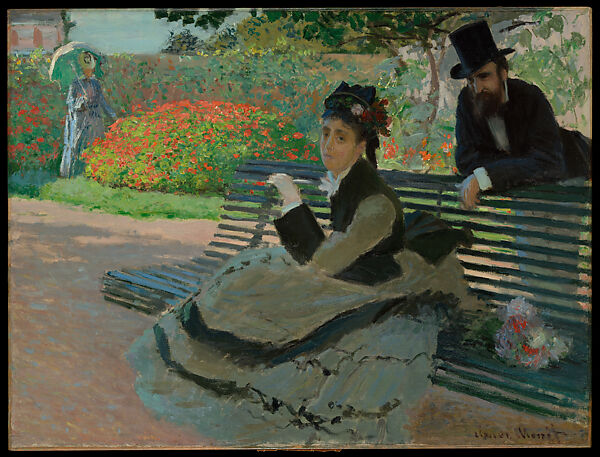
PHILADELPHIA ON THE ROCKS
A happy four days spent on Mount Desert Island. Gave a lecture on Planting Fields to the Beatrix Farrand Society; visited the spectacular Abby Rockefeller Garden; had a memorable lunch at Martha Stewart’s great house, Skylands; saw a beautiful wooden body 1913 Peugeot in the Seal Cove Auto Museum; went sailing on a Herreshoff canoe yawl; ate Scott Koniecko’s perfect oysters in his as-yet unfinished perfect house. I stayed in Northeast Harbor, once known as Philadelphia on the Rocks because so many Philadelphians summered there, and because they were a tipsy crowd. Cheers!

WRITING
In a spirited talk at Purdue University, the noted biographer Stacy Schiff was asked what advice she might give to aspiring writers. “Your only job is to make the reader turn the page,” was one of her answers. Pithy, and true. Years and years ago, before she became a famous biographer, Stacy was an assistant editor at Viking, my editor when I was writing Home. Later, when I was setting out to write a biography of Frederick Law Olmsted I too asked her for advice. “You need to learn everything about your subject,” she counseled, “but the reader doesn’t need to know everything you know.” Equally good advice, and not just for biographers.

ARCHITECTURE AND BUILDING
“It is very necessary, in the outset of all inquiry, to distinguish carefully between Architecture and Building,” wrote John Ruskin in the opening chapter of The Seven Lamps of Architecture. The modern democratic spirit tends to resist this distinction. Surely all buildings can be architecture, the humble as well as the grand, the cottage as well as the cathedral? The problem with this well-meaning leveling out is not that it elevates the former but that it tends to lower the latter. When a utilitarian apartment block or office building is treated as architecture, that establishes a sort of benchmark in which repetition, functionality, and practicality become preeminent architectural virtues. What then is to distinguish the civic or religious monument? “Nothing” said Mies van der Rohe, whose severe logic required him to use a similar architectural language for both the chapel (above) and the heating plant at IIT. Less doctrinaire early twentieth century architects, who found themselves obliged to design both office buildings and cathedrals, remained cognizant of the difference. Their commonsense solution was to introduce Architecture piecemeal. A factory building might get a classical entrance portal; a department store display window might warrant a special surround. In an office tower,

PARK BENCHES
When I wrote Now I Sit Me Down, a history of chairs and sitting, I included folding chairs, office chairs, and chairs on wheels, but I neglected park benches. I suppose I took them for granted. Whenever I go for a walk I often sit down on a park bench. They’re usually not very comfortable. Some are made out of heavy slabs of wood, to reduce maintenance, I suppose; more modern benches seem to be designed mainly to discourage loafing. As with much sitting furniture, you have to go back in time to find an exemplary design, in the case of benches, to mid-nineteenth century Paris. Jean-Antoine-Gabriel Davioud (1824-1881) was a prize-winning graduate of the École des Beaux-Arts who worked for the Paris planning department at the time that Baron Haussmann was remaking the city. Davioud designed fountains, arches, and gates, as well as those characteristic advertising columns plastered with posters that you can still see on Parisian boulevards. He was also responsible for two types of benches: the banc droit, or upright bench, a simple two-way facing bench with a shared back, and his wonderfully designed banc gondole. The gondola bench is made of thin wooden strips supported by cast iron frames.

SKETCHING
Architects have always travelled with sketchbook in hand. Partly it’s a way of recording interesting places, but more importantly, it’s a way of seeing. The opposite of point-and-shoot, sitting and drawing is a leisurely way to absorb one’s surroundings. My friend Laurie Olin, a lifelong travel sketcher, has been publishing collections of his sketches, grouped by country; four years ago France Sketchbooks and recently In Italy, both from ORO Editions. Olin’s sketches are more than attractive impressions—although they are that—they also reflect a landscape architect’s practiced eye, being full of detailed notes and observations. What also struck me is how his sketches are often populated, like the church of Santa Maria della Consolazione in Todi (above). This sets him apart from most architects who tend to record buildings and spaces but not the life they contain. In Olin’s sketch, the sixteenth-century church, which had many architects, including Bramante, Sangallo, and Vignola, becomes a classical backdrop for groups of sitters, and for a mother and child and their little dog.
THE END OF ARCHITECTURE?
I got an email request the other day. The sender had asked ChatGPT “What are the best articles about architecture written since 1990?” and the third recommendation, after two essays by Koolhaas, was “The End of Architecture?” by Witold Rybczynski. According to the bot, “In this provocative article published in 1996, Rybczynski reflects on the state of architecture at the end of the 20th century and questions whether the discipline has reached its limits or if new directions are emerging.” Stirring stuff. Could I send a link to the article, my correspondent asked? He had been unable to find it online, he explained.
No wonder he had trouble finding it—this article doesn’t exist. I never wrote “The End of Architecture?” but perhaps I should have. When I look at the new buildings going up in my neighborhood, the results don’t really qualify as Architecture. In a chapter titled “The Fundamental Principles of Architecture,” Vitruvius wrote: “Architecture depends on Order, Arrangement, Eurythmy [beauty], Symmetry, Propriety, and Economy.” I search in vain for these qualities. By economy, Vitruvius did not mean cheapness—there’s plenty of that—but rather suitability, that is, how a building is appropriate to its station in life. I look in vain for a sense of private decorum in a row of chic houses,

